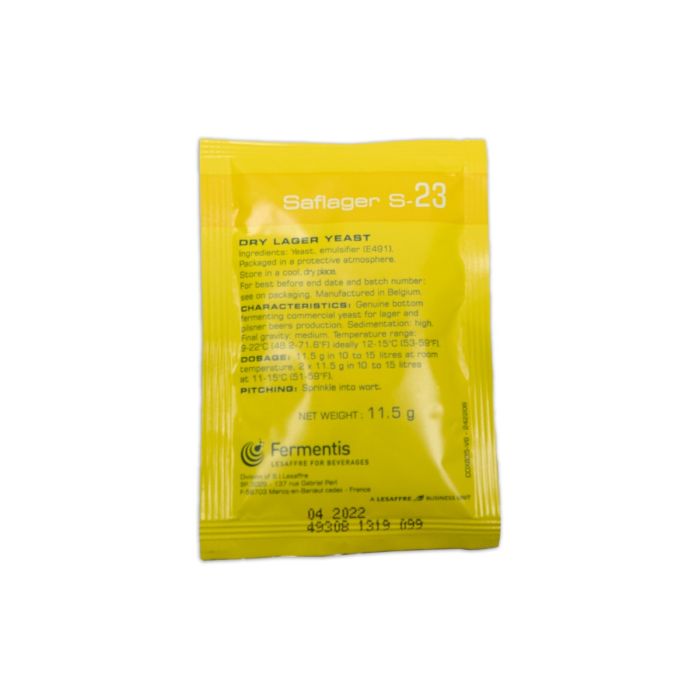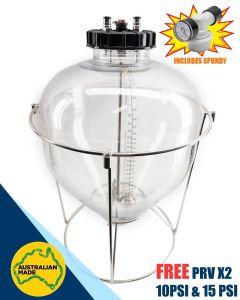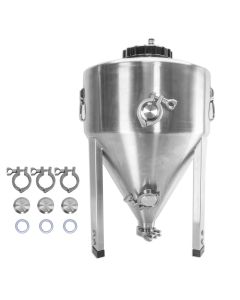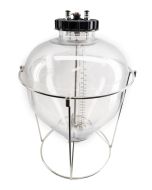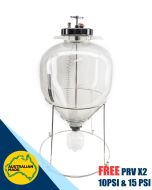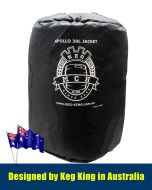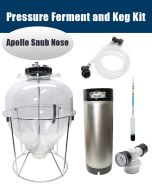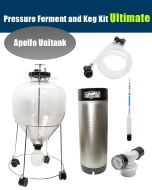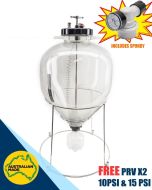S-23 Fermentis Saflager 11.5g
S-23 Fermentis Saflager 11.5g
S-23 Fermentis Saflager 11.5g yeast!
THE SOLUTION FOR FRUITY AND HOPPY LAGERS
Bottom fermenting brewer’s yeast originating from Berlin in Germany. SafLager S-23 recommended for the production of fruitier and more estery lagers. Its profile gives beers with a good length on the palate.
Key Features:
- Lager fermentation specialist: The S-23 strain is specifically tailored for lagers, allowing you to produce clean, crisp, and refreshing beers that are characteristic of this style.
- Outstanding attenuation: This yeast has excellent attenuation properties, ensuring your lagers reach the desired level of dryness and clarity.
- Wide temperature range: With the ability to ferment within a wide temperature range (48°F-59°F / 9°C-15°C), the S-23 provides brewers with flexibility and the opportunity to experiment with different flavors.
- Enhanced flocculation: The S-23 yeast settles quickly, leading to clear beer with minimal sedimentation, allowing you to achieve professional-looking results.
- Consistent performance: Each 11.5g packet contains a carefully measured amount of yeast, ensuring consistent fermentation results and peace of mind.
Why Choose S-23 Fermentis Saflager 11.5g?
- Superior quality: This yeast is produced by Fermentis, a renowned and trusted name in the brewing industry, guaranteeing the highest standards of quality and purity.
- Versatile applications: S-23 is suitable for a wide range of lager styles, including Pilsners, Bocks, Dortmunders, and more, making it a must-have for any serious brewer.
- Easy to use: The 11.5g packet provides the perfect amount of yeast for most standard lager batches, ensuring convenience and simplicity during the brewing process.
- Time-saving: With the S-23 yeast, you can expect shorter fermentation times compared to some other lager strains, allowing you to enjoy your delicious beer sooner.
Dosage / Temperature
80 to 120 g/hl at ideally 12°C – 18°C (53.6-64.4°F).
Use
Lesaffre know-how and continuous yeast production process improvement generates an exceptional quality of dry yeasts able to resist to a very wide range of uses, incl. cold or no rehydration conditions, without affecting their viability, kinetic and/or analytical profile. Brewers can choose usage conditions that fit the best their needs, i.e.:
① Direct pitching:
Pitch the yeast directly in the fermentation vessel on the surface of the wort at or above the fermentation temperature. Progressively sprinkle the dry yeast into the wort ensuring the yeast covers all the surface of wort available to avoid clumps. Ideally, the yeast will be added during the first part of the filling of the vessel; in which case hydration can be done at wort temperature higher than fermentation temperature, the fermenter being then filled with wort at lower temperature to bring the entire wort temperature at fermentation temperature.
② With prior rehydration:
Alternatively, sprinkle the yeast in minimum 10 times its weight of sterile water or boiled and hopped wort at 15 to 25°C (59°F to 77°F). Leave to rest 15 to 30 minutes, gently stir and pitch the resultant cream into the fermentation vessel.
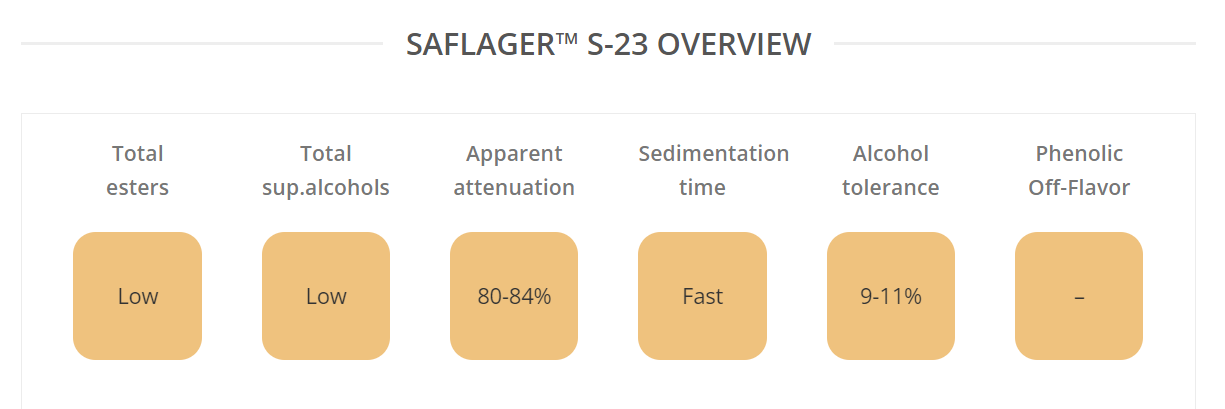

Dosage / Temperature
80 to 120 g/hl at ideally 12°C – 18°C (53.6-64.4°F).
Use
Lesaffre know-how and continuous yeast production process improvement generates an exceptional quality of dry yeasts able to resist to a very wide range of uses, incl. cold or no rehydration conditions, without affecting their viability, kinetic and/or analytical profile. Brewers can choose usage conditions that fit the best their needs, i.e.:
① Direct pitching:
Pitch the yeast directly in the fermentation vessel on the surface of the wort at or above the fermentation temperature. Progressively sprinkle the dry yeast into the wort ensuring the yeast covers all the surface of wort available to avoid clumps. Ideally, the yeast will be added during the first part of the filling of the vessel; in which case hydration can be done at wort temperature higher than fermentation temperature, the fermenter being then filled with wort at lower temperature to bring the entire wort temperature at fermentation temperature.
② With prior rehydration:
Alternatively, sprinkle the yeast in minimum 10 times its weight of sterile water or boiled and hopped wort at 15 to 25°C (59°F to 77°F). Leave to rest 15 to 30 minutes, gently stir and pitch the resultant cream into the fermentation vessel.
- Viable yeast > 6.0 *109 cfu/g
- Purity : > 99.9 %Lactic acid bacteria: < 1 cfu /6.0*106 yeast cell
Acetic acid bacteria: < 1 cfu /6.0*106 yeast cell
Pediococcus: < 1 cfu /6.0*106 yeast cell
Total Bacteria: < 1 cfu /106 yeast cell
“Wild” Yeast*: < 1 cfu /6*106 yeast cell
Pathogenic micro-organisms: in accordance with regulation
*EBC Analytica 4.2.6 – ASBC Microbiological Control-5D
Storage
For less than 6 months: the product must be stored below 24°C. For more than 6 months: the product must be stored below 15°C. For short periods not exceeding 7 days there is an exception to these rules.
Shelf life
36 months from production date. Refer to best before end date printed on the sachet.Opened sachets must be sealed and stored at 4°C (39°F) and used within 7 days of opening.Do not use soft or damaged sachets.
Each Fermentis yeast is developed under a specific production scheme and benefits from the know-how of the Lesaffre group, world leader in yeast manufacturing. This guarantees the highest microbiological purity and maximum fermentation activity.
| Ribbon | None |
|---|---|
| Discontinued | No |
| Order By Request | No |
| Sale | No |
| New | No |


